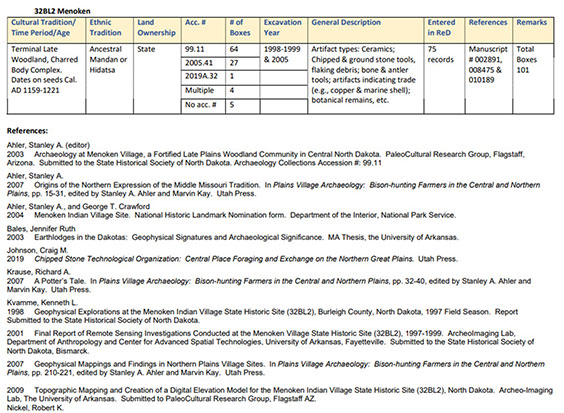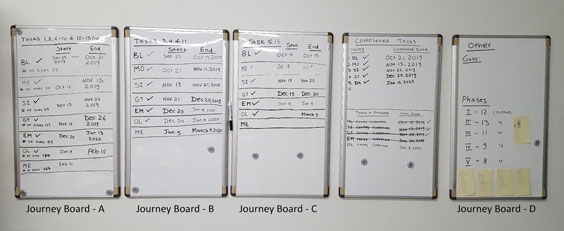Maximizing the Use of Archaeological Collections for Research, Interpretation, Education, and Exhibit
The Archaeology and Historic Preservation (AHP) Division houses more than 12 million artifacts for their long-term care, research, and access for multiple entities. The archaeological collections (artifacts, ecofacts, samples, associated records, etc.) provide a window to the past for thousands of years of occupation in the northern Plains of North America. In this blog, I focus on a major collections project that works to maximize the usability and accessibility of archaeological collections curated at the State Historical Society. As the archaeology collections manager, my task is not only to ensure that collections are preserved and curated according to Federal Curation Standards, but also to make them accessible to a wide audience through research, exhibits, digitization, public education, loans, and interpretation and publications. Many doctoral and master’s degree researchers use archaeological collections for their studies.
Effective user access to collections requires, at the minimum, assembling and organizing information regarding collection acquisition, accessioning, storage locations, etc. Along with me, three additional AHP archaeologists (Fern Swenson, Amy Bleier, Meagan Schoenfelder) are working on a project to increase the usability and public access to collections. We use journey boards (JB) to divide tasks and track our progress (See photo below). The project aims to summarize and document archaeological collections curated here. The summary includes information regarding site numbers, site names, cultural tradition(s), time period/age, ethnic traditions, land ownership, accession numbers, excavation year(s), storage location, general description of collections, number of records in Re:discovery (collections management software), references, and maps at a site level. By maximizing collections utility and increasing access to collections, we aim to reach a wider audience. This, in turn, will advance science when we promote research, interpretation, and publication.
Among other things, the summary document can be used:
- As reference material for researchers to select sites or collections for their research.
- To identify potential collections for instructional purposes (e.g., collections without provenance (origin) information).
- To understand collections by time period/cultural tradition.
- To map the location of sites where our collections come from.
- To organize/reorganize collections in storage (e.g., collections from the same site may be stored in the same room/aisle).
- To track collection recording and digitizing in Re:discovery.
Sample of Summary Document

Journey Board progress (top) and project members. Journey boards are visual project boards that provide feedback and progress information.
In sum, the summary document will provide archaeologists, scholars, interpreters, educators, culturally affiliated groups, and members of the public with better access to the State Historical Society’s collections for research, publications, exhibitions, education, and other forms of interpretive work, and this will provide information relevant for each of these activities.



